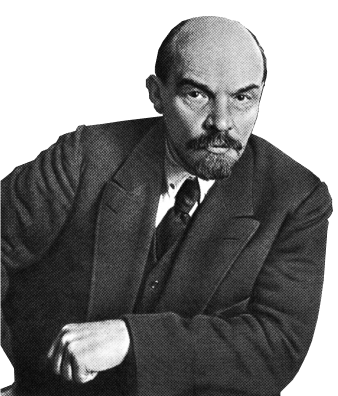Yet again, necessity has been revealed through accident as the rotten nature of American capitalist democracy was exposed in Iowa. The political importance of the small Midwestern state was built up for months as countless candidate dollars and hours were spent in an effort to generate early momentum for November. Instead, the world was treated to a trainwreck of unimaginable incompetence—or cynical sabotage—depending on your appetite for conspiracy theories.
However, leaving aside the fact that the “data inconsistencies” were the hellspawn of Shadow, Inc.—a company run by three Hillary Clinton associates—we need not resort to conspiracies to explain what happened. Marxists must always look for the class roots of contradictory phenomena to shed light on events.
Under the inexorable pressure of the economic crisis, the unbridgeable class divisions in society are ripping apart the jerry-rigged machine that has long stage managed politics in the interests of the ruling class. Without a mass party of their own through which to express their interests, millions of workers are seeking a way out through the existing parties, hoping to transform them into vehicles for working-class politics. However, since these institutions exist to defend the interests of capital, many twists and deformations can be expected before these attempts ram inevitably into a brick wall.
Many Americans fall clearly on one side or another of the left-right divide: those who lean toward socialism, and those who lean conservative on various economic and social issues. But millions of others are simply outraged at the status quo. They may not know exactly what they want, but they are clear as to what they do not want. They will back anyone who attacks the establishment, even if the challenge is merely demagogic.
If this pent-up anger is not allowed expression via the Democratic Party—and the wretches at the head of the DNC have clearly learned nothing from 2016—Trump could well win another term of office. If he were to emerge victorious, however, it would not be the result of a “shift to right” among American workers but because his audacious wrecking ball was better able to harness the unfocused anger.
A preview of his campaign strategy was on full display as Trump arrogantly reveled in a State of the Union address for the ages. Part reality TV, part MAGA rally, the president gloated and upbraided his rivals on the eve of his impeachment acquittal. However, far from the “Great American Comeback” narrative pushed by Trump, what we are living through is peak US capitalism—and its ruling class is hurtling blindly into the abyss.
SNAFU in Iowa
Headed into the nation’s first nominating contest, a number of Democrats, including former Vice President Joe Biden, South Bend, Indiana Mayor Buttigieg, Massachusetts Senator Elizabeth Warren, and Minnesota Senator Amy Klobuchar were all on the attack against Bernie Sanders. Biden, who promises a return to the Obama years, explained that he, and not Sanders, was a “real Democrat.” Buttigieg sought to play up his youth, military, and “moderate” Midwestern credentials. And Klobuchar clung to the illusion that what Americans really want is another conservative Democrat in the White House.
As for Warren—who poses as a progressive while explicitly rejecting socialism—she implied that if Sanders were to win the nomination he could not unify the Democrats, while she could. A few weeks ago, she played the “identity politics” card in an obvious bid to derail his campaign. The Massachusetts Senator, who did not endorse Sanders in 2016, clearly aims to split the Bernie vote and weaken his delegate total going into the party’s national convention in July.
And yet, with 97% of Iowa precincts reporting, the only candidate to call himself a socialist came out in a statistical tie for first place. At the time of writing, Pete Buttigieg had 26.2% of the delegates and Sanders 26.1%, with the Vermont Senator given the slight edge to come out on top once all votes are tallied. Most significantly, Sanders was so far the clear winner when it comes to first votes cast, with 42,673 versus Buttigieg’s 36,718. He also won 44,753 final votes versus Buttigieg’s 42,235. If the caucuses were based on the simple democratic principles of one person, one vote, and majority rules, Sanders would have been the clear winner. Warren came in third place and establishment favorite Biden came in fourth, with Klobuchar in fifth.
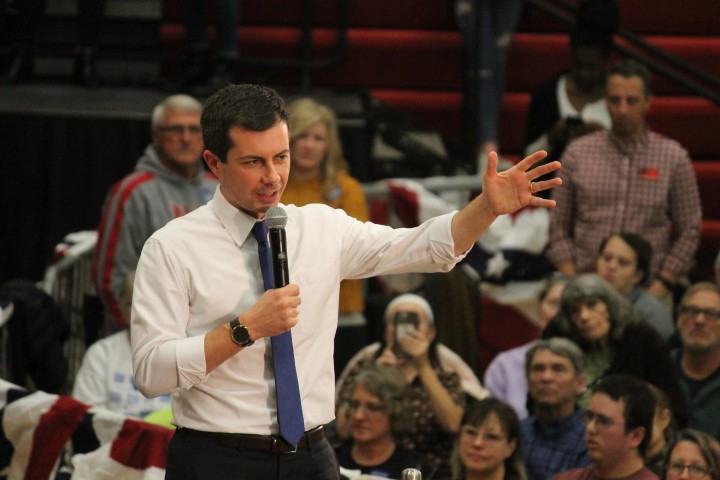
The delayed result clearly steals the spotlight and momentum that is the real prize for Iowa Caucus winners. The headline millions have been seeing over the last couple days has been “Buttigieg in the Lead in Iowa.” Whether this was due to a nefarious plot to steal Sanders’s shine or not, the effect is the same. However, we are just days away from the New Hampshire Primary, and Sanders can expect to get another major boost to his electability credentials. Although both he and Warren are from states that border New Hampshire, he has the advantage, having beat Hillary Clinton by a margin of over 22% of the popular vote in 2016.
Also ominous for all those who seek to knock him off course is the fact that he won overwhelmingly in Iowa’s “satellite caucuses.” These were nomination contests organized for Iowans living outside the state—from Phoenix, Arizona to the actual Caucuses in Tbilisi, Georgia. This is a preview of the mood among many voters outside the typically conservative agricultural heartland.
The Iowa Caucuses were supposed to be Joe Biden’s moment in the sun. For a candidate whose main “appeal” was his alleged ability to beat Trump, being unceremoniously stomped in Iowa may spell the death of his campaign. He himself cast doubts on the integrity of the process in a desperate effort to explain his less-than-stellar showing, coming up short of the 15% threshold necessary to qualify for the second round of voting at many polling locations. Since Biden is considered by many to be the “Hillary Clinton of 2020,” one might expect the DNC to lean on one of its other “anyone-but-Bernie” options—perhaps Pete Buttigieg—in order to avoid an ignominious repeat of 2016. But one should never assume anything when it comes to the short-sightedness of these people!
As for Bernie’s appeal, his campaign is based on calling for Medicare for All, a $15/hour federal minimum wage, free tuition at all public universities, a “Green New Deal,” and fighting against the “establishment” and the “billionaire class.” After decades of stagnation and austerity for the workers, basic reforms such as these resonate deeply, especially in a country without a mass working-class party. No candidate has anywhere near the number of contributors Bernie has. More than 1.4 million people have given money to his campaign and he has raised more money than any other candidate—with the exception of the billionaires Trump, Steyer, and Bloomberg, who largely fund their own campaigns with fortunes made through the exploitation of the working class.
And yet, despite the anti-Trump stakes, turnout at the Iowa Caucuses was flat, almost certainly reflecting a deep-seated distrust of the DNC and its past and present treatment of Bernie. Anecdotal evidence seems to indicate a general lack of excitement and participation overall, despite the enthusiasm of many Sanders supporters in particular, and the figures also seem to back this up.
In 2016, 171,517 Iowans participated in the Democratic Party Caucuses, and 653,699 voted Democrat in that year’s general election. This year, there were many first-time caucus participants, but the total turnout for the remained roughly the same at around 173,000. And while Bernie did well among first-time attendees, many who voted for him in 2016 have since broken with the Democratic Party and did not show up this time around. This is evidenced by the fact that, whereas Sanders and Clinton tied for top spot in 2016, exit polls in 2020 suggested that only 35% of this year’s participants had been Bernie supporters last time around, while former Clinton supporters made up over 50%.
It remains to be seen whether these trends continue in the contests yet to come—or whether the ramped up attacks on Bernie bring out more of his supporters. What is undeniable is that millions of people look to Sanders and “The Squad” (four women Democratic representatives with left-wing credentials: Alexandria Ocasio-Cortez of New York, Ilhan Omar of Minnesota, Ayanna Pressley of Massachusetts, and Rashida Tlaib of Michigan) in hopes of changing the system. But it is also evident that many increasingly doubt the proposition that the path to real change runs through the Democratic Party. Whatever the end result, the 2020 elections will mark an important turning point in American political life. Socialists need to think seriously about the way forward.
Sanders and the Democrats
Bernie Sanders has been politically active for decades and has long identified as a socialist. An admirer of Eugene Debs, he produced a documentary on the great American socialist in 1979. Prior to 2016, Sanders did not support the Democrats and always ran on a third-party or independent ballot—though he “caucused” with the Democrats while in office. And on the eve of his first presidential campaign, back in September, 2014, he presciently declared: “Anybody who speaks to the needs of the working class and the middle class of this country and shows the courage to take on the billionaire class—I think that candidate will do pretty well.”
Before running as a Democrat, Sanders considered an independent campaign—and was cynically encouraged to do so by none other than Donald Trump. Ultimately, he decided against it and threw his lot in with the donkeys of the DNC. As is also well known, once Hillary Clinton “won” the nomination, Sanders ended up supporting her in the general election—though there were plenty of doubts as to whether or not he would.
This year, however, Sanders did not even consider an independent run and has stated more-or-less unequivocally that he will support the Democratic nominee no matter what. Assuming he fails to win the nomination—though he may well surmount the odds in the end—he is setting himself up to yet again play the role of a “Pied Piper,” channeling those seeking a break with the system right back into the Democrats.
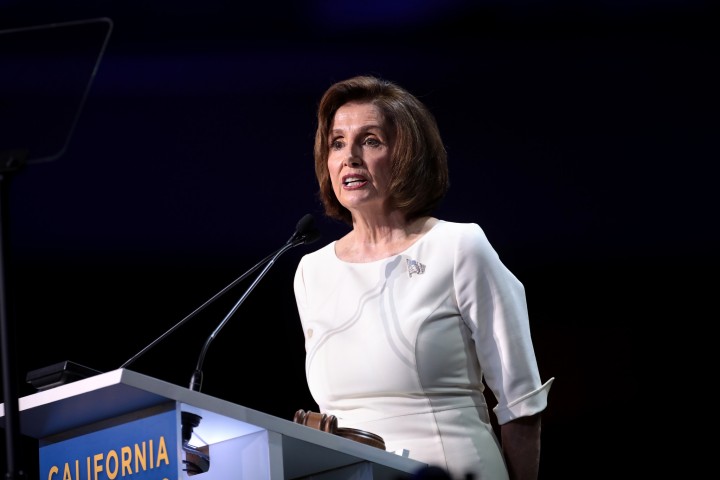
After he won in New Hampshire four years ago, Sanders made a speech in which he explained his vision of “democratic socialism.” At root, his vision is not socialism at all, but a 21st century variant of FDR’s “New Dealism.” However, genuine socialism involves a fundamental transformation of social and economic relations, not merely a change of political scenery at the top.
As an example of the limited scope of his vision, Sanders seems to think that Denmark and Sweden are “socialist countries,” given their relatively decent social welfare programs. Never mind that these gains, won in the past through concerted class struggle by the workers, are now under relentless attack by big capital. And in another crucial example, he doesn’t call for the nationalization of the key levers of the economy, to be run in the public interest under workers’ democratic control, but rather, for the “breaking up” of the big banks and monopolies, while leaving them in private hands.
Socialists must have a clear understanding of history. Franklin Delano Roosevelt was an American “patrician” who led the Democrats from 1932 until his death in 1945. The Keynesian reforms put in place during his tenure in office—most of which were temporary—were given under the pressure of major working-class struggles that erupted in the 1930s. They were intended, not to transform the US into a socialist society, but precisely the opposite—to save capitalism. The amount spent on social programs was a pittance compared to the military expenditure of World War II—and the superrich made loads of money as a result.
The working class needs its own political party to fight the capitalists and the Democratic Party is not such a party. It is neither democratic nor a party in any real sense of these words. Its “big tent” is a bought-and-paid-for institution of, by, and for the capitalist class, fused directly with the capitalist state.
In a democratically administered workers’ party, every member would have a vote. Affiliated unions would also get votes based on their membership and we would argue that these votes should be under the democratic control of the unions’ membership. The candidate selection process would be independent of the state and based on a collectively agreed upon program which all candidates would be bound to defend and fight for. Party leaders and candidates would be directly elected by the membership and affiliated unions, and would be recallable from their positions at any time. Contrast this vision of politics to the big-money vote-generating machine of the Democrats!
The party rules governing delegate allocation are clearly stacked against Bernie. As an example, in Michigan in 2016, Sanders won more votes in the primary—yet Clinton won more delegates. And on Monday night, in Iowa Precinct 80 in Des Moines, Bernie had 101 people supporting him, while Mayor Pete had just 66—yet they both ended up with 4 delegates. And then there’s the Electoral College, which gives preferential allocation of presidential electors to smaller, more rural states. How is any of this even remotely “democratic”?
Iowa is just one state. There are 49 states to go, along with Washington, D.C., Puerto Rico, Guam etc., which will also select delegates. The Democrats’ strategy will surely be to maintain as many candidates as possible in the race for as long as possible, in order to deny Sanders a clean majority at the national convention this summer. If no candidate wins over 50% in the first round of voting, the second round will include the so-called superdelegates—top Democratic Party honchos with virtual veto power—almost all of them opposed to Sanders.
If Bernie emerges as the front runner in the weeks and months ahead, he can expect more attacks and plenty of red-baiting—though this could backfire and lead to a rise in support. What is clear is that the Democrats have plenty of tricks they can use to deny Sanders, including Michael Bloomberg, a weapon held in reserve to be wielded either as a Democrat or as an independent should the need arise.
Socialists must also consider what would happen if Sanders actually won the nomination and general election. His program of modest reforms would be opposed viciously, not only by Republicans, but by the vast majority of Democratic Party officeholders. In such a scenario, Sanders could either capitulate to the establishment or fight back. To fight back effectively, he would need to break with his own party and mobilize the workers in class-independent struggle, an essential component of which would be the building of a mass socialist party. With such a perspective in mind, what sense does it make to foment any illusions in the Democratic Party as a vehicle for transformative change?
How to defeat Trump: unify the working class, not the Democrats!
Trump made a lot of empty promises during his 2016 campaign. Remember when he said he would grow the economy by 4% or more per year, every year? Or how he would spend billions on infrastructure? Or how he would dismantle Obamacare, which is rightly hated by millions, and replace it with something even better and cheaper?
Blocked by the DNC from expressing their frustration through the Democrats, many workers cast a protest vote for Trump in 2016—and were as surprised as anyone that he actually won. However, despite Trump’s boasts to the contrary, most Americans are no better off than they were four years ago, and many are far worse. This is the underlying reason for the accelerated turbulence in American society and politics.
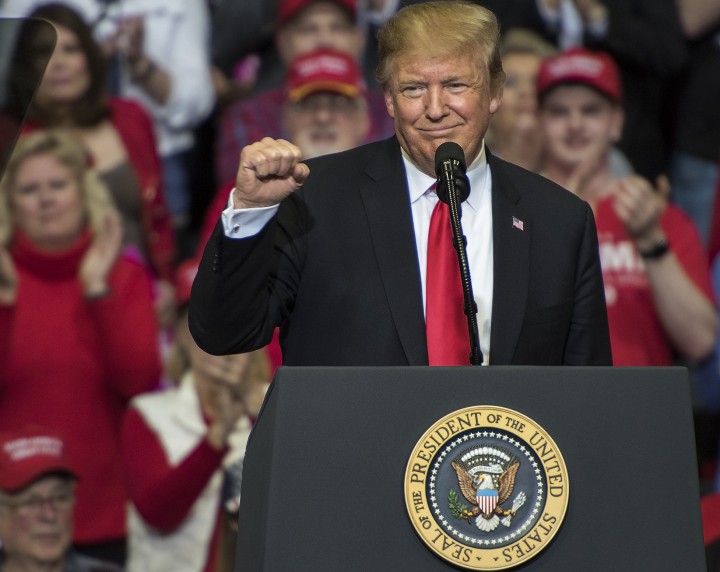
The leaders of the Democratic Party complain that Bernie could not unify the party if he were its candidate. This may well be true. But it shouldn’t concern socialists in the slightest. We are not lesser-evilists who will support anyone, no matter how vile, out of sheer desperation to defeat Trump. The way to defeat Trump is to unite the working class, not the Democrats! The unholy alliance of the Democratic Party, which for centuries has subordinated the interests of the laboring majority to the interests of a handful of exploiters, must be broken once and for all!
Many workers who voted for Trump in 2016, or who sat out the election altogether, would be open to voting for a new working-class party—but never for a Democrat. The crimes and betrayals of that party are deeply ingrained in the minds of millions—even of those who still cling to them for lack of an alternative. In fact, recent polls show that a large majority of Americans—including 54% of Democrats, feel that a third major party is needed, and that the two parties that currently rule the country do not adequately express their interests.
Millions of Americans from both major parties could be won to an independent working-class program that fights for meaningful reforms by making the rich pay for the crisis of their system. As an example, expanded health care for all need not be paid for through additional taxes on better-paid workers—a divisive and much-hated component of Obamacare. The wealth exists in society to provide truly universal coverage, as well as quality education and housing, universal jobs at a living wage, a reduction in the working week, a massive jobs program to rebuild infrastructure, and much more. All of this could be paid for by nationalizing the Fortune 500 under democratic workers’ control.
Socialists should not get caught in the swamp or confused by the smoke and mirrors. The way forward is to chart a path towards establishing a workers’ government in the United States. The first step on this path is the building of an independent, mass workers’ party. Imagine if Sanders and “The Squad” broke from the Democrats, mobilized their supporters, and appealed to the labor unions to form a mass socialist party! The two-party system would fall like a house of cards and a new epoch of class struggle would open in the “belly of the beast.”
For independent socialist candidates!
In the absence of a mass socialist political alternative, what can socialists do now on the electoral front? DSA is the largest socialist organization in the US and many people look to it and its de facto publication, Jacobin, for ideas and guidance. Some of their members have been elected to office, including two in Congress, and others are running for office in 2020. DSA and Jacobin have gone “all-in” for Sanders as a Democrat in 2020. Many around Jacobin advocate a “dirty break” with the Democrats at some undefined time in the future. Their “strategy” is to build a “socialist” caucus with candidates elected on the Democratic ballot line, in order to later affect a messy “break” from the party, thus providing the basis for a new political formation.
The International Marxist Tendency agrees wholeheartedly with the “break” part of this approach—and we think it should happen immediately. As for the “dirty,” the problems with this strategy are many-fold. Firstly, it engenders the false idea that the working class can defend its class interests within a party that is controlled by the capitalist class. However, we can be certain that the US ruling class will not abandon this party without a fight!
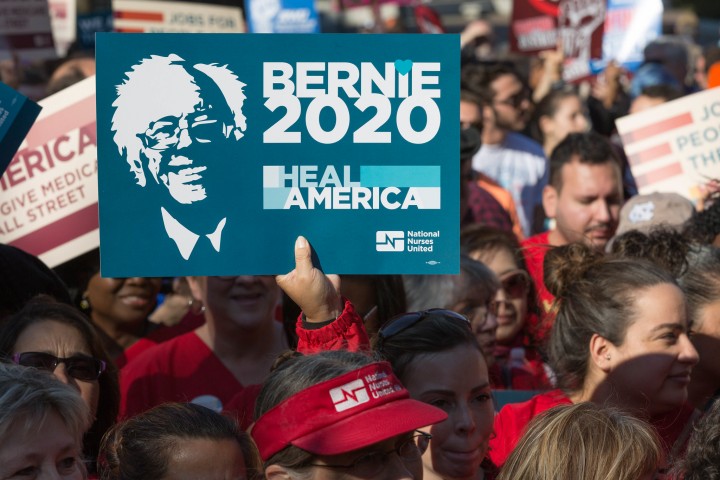
Self-declared socialists who run as Democrats will inevitably be associated with that party as a whole. This muddies the banner of socialism. When these “socialists” vote for Nancy Pelosi and others like her, workers can see no discernible difference between socialists and the liberal enemies of the working class. As an example, at the State of the Union address, Pelosi dramatically tore up a copy of Trump’s speech in a theatrical and superficial show of opposition. But when Trump introduced Juan Guaidó, the US puppet and would-be dictator of Venezuela, she gushed with heartfelt applause and approval—revealing the real class interests she represents.
The “dirty break” also leads to socialists watering down their program, limiting it to what is acceptable to liberal Democrats, in order to win elections. As an example, AOC (Alexandria Ocasio-Cortez) took a bold step by getting out in front of the issue of climate crisis. Although the “Green New Deal” doesn’t go nearly far enough to address climate change, it made a splash and seemed to mark a dramatic break with politics as usual. However, it was co-sponsored by the liberal Senator Ed Markey. As a result, this legislation, which is already limited to capitalist-friendly solutions, will be stripped of anything meaningful if it ever makes it out of the congressional labyrinth of committees and subcommittees—not to mention the capitalist courts.
Instead, socialists should propose legislation that would nationalize the 100 companies that create over 70% of climate emissions, to be run under democratic workers’ control. This, too, would be dead in the water in the current US Congress. But it would certainly get people thinking about the kind of measures that are really needed to address this urgent crisis and provide a rallying call to mobilize people on the streets, in the workplace, and at the polls.
This is why we believe DSA should call an emergency conference to reject the policy of the “dirty break.” All socialists running for office, whether challengers or incumbents, should run independent of the Democrats on a real socialist program that goes beyond the limits of what is acceptable to capitalism. They should accept only a workers’ wage and donate the rest of the salary to the movement. This could start immediately with Congresswomen Tlaib and Ocasio-Cortez. And last but not least, DSA should publicly state that their support for Sanders is contingent on him breaking from the Democrats and helping them to form a mass party.
If DSA did this, it would be a huge step forward. Even if Sanders did not break with the Democrats, DSA could help lay the basis for what, in the current situation, could rapidly grow into a mass vehicle for the working class to fight for a socialist workers’ government—the only way out of capitalism’s systemic crisis.
The road to 3 November will be long and circuitous. Whether or not Sanders can win the Democratic nomination is impossible to predict in advance. While Trump heckles and Tweets from the sidelines with the nearly unanimous public backing of his party, the Democrats will likely engage in a grueling war of attrition. As we’ve explained before, they may even prefer to write off 2020 as a loss, rather than have Sanders as their nominee or president. And if the impending economic meltdown takes place in the next few months, all bets will be off.
Donald J. Trump has put his indelible stamp on American life. But the misery faced by people in the US and around the world is not due primarily to Trump’s policies. It is the result of the organic crisis of capitalism and the policies of all US capitalist administrations, including Trump and his predecessor, Barack Obama.
The decay and decline of the system rules out any major, long-lasting reforms. In fact, even further polarization of wealth is on the order of the day. And with climate change accelerating, it is not hyperbole to say that humanity faces an existential crisis. To improve our lives, and to ensure our species’ survival, we must transform society—and we do not have all the time in the world.
The 2020 elections will go a long way towards hastening the demise of the precarious political status quo, which cannot continue indefinitely. Much is happening beneath the surface, and revolutionaries should not succumb to impatience or the search for shortcuts. We can be sure that the longer it takes for this process to unfold, the more explosive and dynamic it will be. We must stand firm in our class-independent principles, patiently explain the real nature of American society, and prepare for the colossal potential to build the forces of revolutionary socialism that will open in the not-too-distant future.
